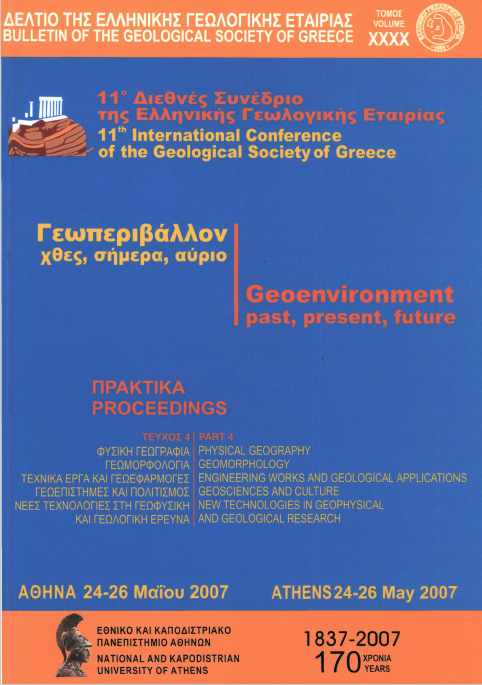A study of the deltaic coast morphometry of river Pinios in relation to its hydro- & sediment dynamics

Abstract
This paper refers to the study of the morphodynamic processes, on a seasonal basis, in the river delta of Pinios (Greece) with the application of the discharge effectiveness index (Ef) -which associates the water discharge (D) with the wave power (PJ- and the estimation of the potential longshore sediment transport (Ql). The delta is characterised according to the classification proposed by Galloway (1975) and revised by Briggs et al (1997), as wave/fluvial dominated type of delta, having a cuspate shape like the deltas of San Francisco and Rhone. Wave processes are dominant during summer-autumn period (low values ofEf) and river processes are important in winter and spring (high values ofEf). The total potential longshore sediment transport is northwards and more intensive in the region to the south of its current mouth.
Article Details
- How to Cite
-
Foutrakis, P., Poulos, S., Maroukian, H., & Livaditis, G. (2007). A study of the deltaic coast morphometry of river Pinios in relation to its hydro- & sediment dynamics. Bulletin of the Geological Society of Greece, 40(4), 1522–1529. https://doi.org/10.12681/bgsg.17055
- Section
- Physical Geography- Geomorphology

This work is licensed under a Creative Commons Attribution-NonCommercial 4.0 International License.
Authors who publish with this journal agree to the following terms:
Authors retain copyright and grant the journal right of first publication with the work simultaneously licensed under a Creative Commons Attribution Non-Commercial License that allows others to share the work with an acknowledgement of the work's authorship and initial publication in this journal.
Authors are able to enter into separate, additional contractual arrangements for the non-exclusive distribution of the journal's published version of the work (e.g. post it to an institutional repository or publish it in a book), with an acknowledgement of its initial publication in this journal. Authors are permitted and encouraged to post their work online (preferably in institutional repositories or on their website) prior to and during the submission process, as it can lead to productive exchanges, as well as earlier and greater citation of published work.







